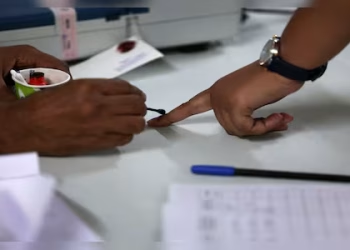Taro ASO, former Deputy Prime Minister and Minister of Finance of Japan, delivered a speech during an ordinary session in the lower chamber of Parliament in Tokyo, Japan, Monday January 2020. Photographer: Kiyoshi Ota/Bloomberg via Getty Images
Bloomberg | Bloomberg | Getty Images
Sanae Takaichi, who is expected to become the next Prime Minister of Japan, chose the former Prime Minister and trucks of the Taro ASO party on Tuesday as vice-president of her ruling party, a decision that certain analysts consider as a force of restraint against significant budgetary expenses.
Takaichi also chose former Minister of Finance Shunichi Suzuki as Secretary General of the Liberal Democratic Party (PLD), a position that exerts enormous influence in party affairs, in a series of key positions announced on Tuesday.
These announcements intervene after the ruling party chose Takaichi on Saturday, the budget dove, at its head, thus placing it on the right track to become the first Prime Minister of Japan.
Japanese shares have jumped and the Yen collapsed this week due to market expectations. Takaichi will deploy significant budget recovery measures and put pressure on the central bank so that it slows down the increase in interest rates.
“During the management race, the ASO faction supported Takaichi, so his administration could remain strongly influenced by him,” said Takahide Kiuchi, executive economist at the Nomura research institute.
“ASO’s influence could moderate aggressive or monetary budget impulses that are too conciliatory,” he said, adding that Suzuki is also considered to focus on budgetary discipline.
ASO was Prime Minister when the collapse of Lehman Brothers in 2008 rocked the world economy.
While he was Minister of Finance when former Prime Minister Shinzo Abe deployed his “Abenomics” revival policies in 2013, ASO preached the need to maintain public finances in Japan, heavily in debt. It is therefore considered by the markets as having a more balanced approach in budgetary policy than supporters of aggressive expenditure like Takaichi.
But the bond markets remain nervous as to the possibility that the minority coalition of Takaichi forms an alliance with an opposition party and acquiesce its calls for tax reductions and significant expenses.
The yield of the Japanese state obligation (JGB) at 20 years old has marked a new summit for 26 years and the reference return at 10 years has reached its highest level on Tuesday for 17 years, the markets believing that Takaichi’s policy could test the finance already in difficulty of Japan.
The national media reported that Takaichi was in talks to possibly form an alliance with the Democratic Party for the People, which proposed income tax reforms aimed at increasing the net wages of working households.
“If Takaichi chose the Democratic Party, the amount of expenses could increase according to what its leader will demand in exchange for the formation of an alliance,” said Naomi Muguruma, chief strategist for bonds at Mitsubishi Ufj Morgan Stanley Securities.
“Nothing guarantees that ASO will serve as a counterweight against major expenses,” she said. “Given so many uncertainties, few investors will be willing to buy JGB.”









